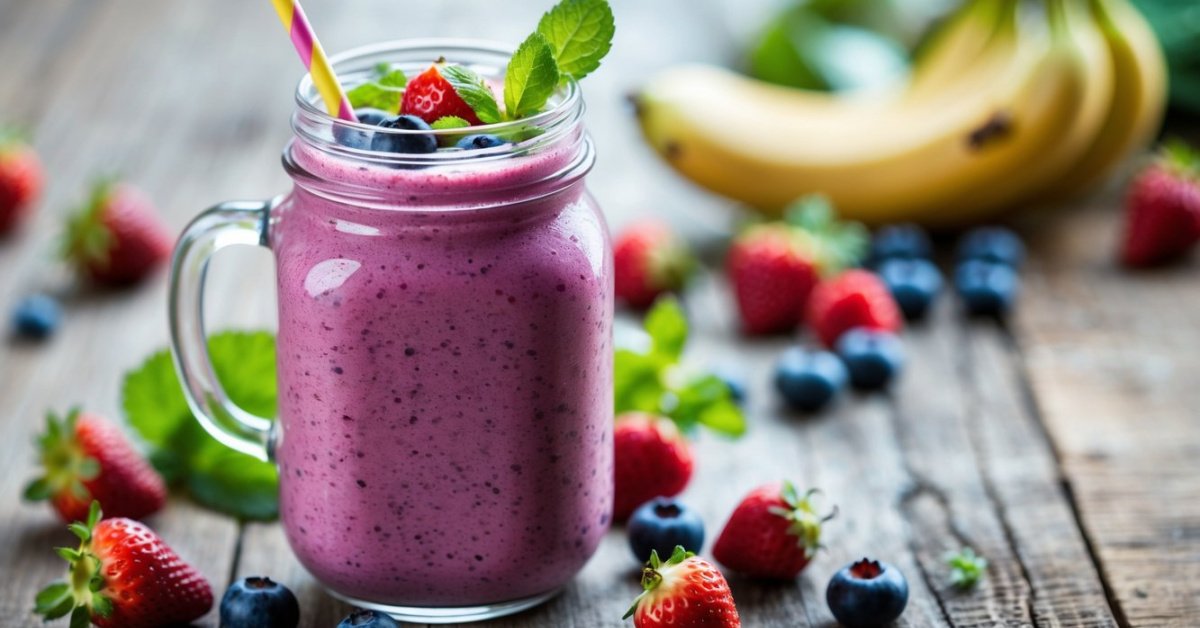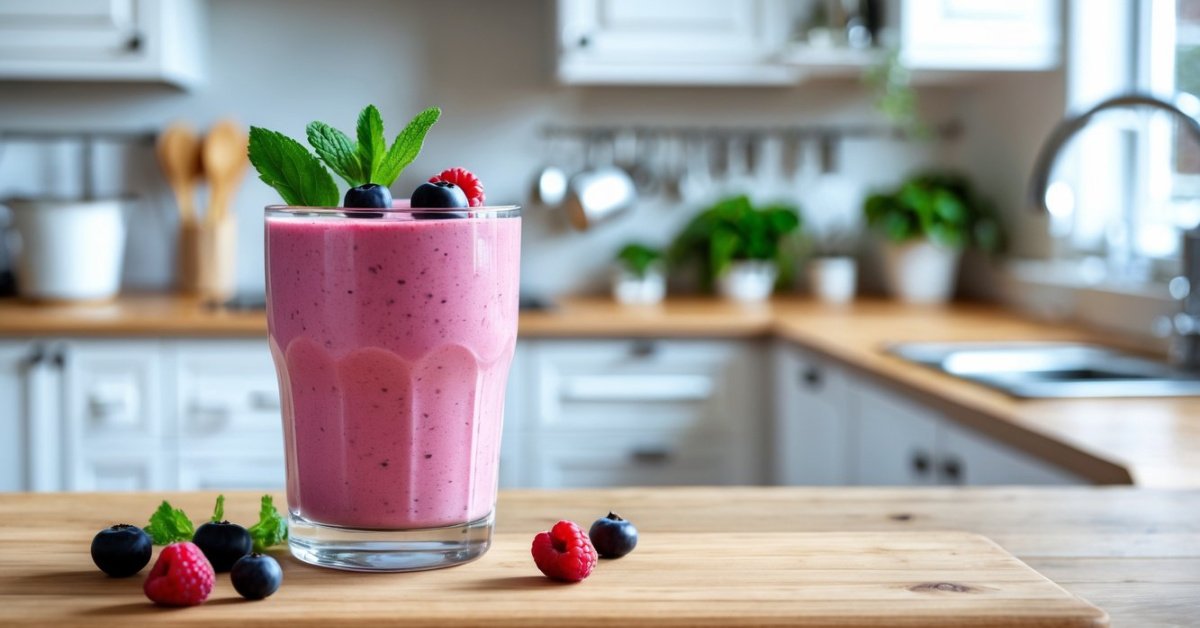After a tough workout my muscles always crave something refreshing and nourishing. That’s when I reach for a smoothie. It’s more than just a tasty treat—it’s a secret weapon for bouncing back faster.
I love how easy it is to blend up a mix of fruits protein and other good stuff. With the right ingredients smoothies can help my body repair and recharge after exercise. They’re quick convenient and packed with nutrients that support recovery so I can get back to doing what I love.
Understanding Muscle Recovery After Exercise
Muscle recovery after exercise relies on restoring nutrients lost during physical activity. When I blend smoothies or shakes for my shop, I always consider how exercise causes small tears in muscle fibers and lowers stored glycogen. Replenishing these losses jumpstarts repair and growth.
Restoring lost fluids becomes essential after sweating through a tough workout. Ingredients like fresh fruit and yogurt add hydration along with beneficial micronutrients. For example, bananas and coconut water offer potassium, which supports electrolyte balance, while berries pack antioxidants to calm post-exercise inflammation.
Protein intake directly influences muscle repair. I add sources like Greek yogurt, protein powder, or nut butters, since they supply amino acids necessary for rebuilding muscle tissue. Studies in the Journal of the International Society of Sports Nutrition show that consuming about 20–40g of protein soon after exercise improves recovery.
Carbohydrates play a big role in topping up glycogen stores. I often use oats, dates, or honey to give smoothies a quick, natural burst of carbs. According to the American College of Sports Medicine, pairing carbs and protein boosts both glycogen replenishment and muscle repair rates.
By choosing ingredients that hydrate, replenish, and nourish, I help make post-workout recovery a lot tastier and more effective for every smoothie lover who visits my shop.
Key Nutrients for Muscle Repair
I see muscle repair as a blend of science and taste, especially when it comes to smoothies. Each ingredient works with key nutrients to support recovery, boost hydration, and keep the experience enjoyable.
Protein and Amino Acids
Protein and amino acids form the backbone of muscle repair in my smoothie recipes. I use Greek yogurt, whey protein, or plant-based protein powders to give every smoothie at least 20g of protein, matching research from the International Society of Sports Nutrition. Complete proteins supply all nine essential amino acids—crucial for rebuilding muscle fibers after tough training. I also add nut butters, chia seeds, or hemp seeds for bonus amino acids and a creamy texture.
Vitamins and Minerals
Vitamins and minerals in fresh fruits and leafy greens create a strong foundation for recovery shakes. I pack smoothies with spinach, pineapple, berries, and bananas to increase vitamin C, calcium, potassium, and magnesium intake. These micronutrients help muscle contractions, nerve function, and reduce post-workout soreness. Dark leafies offer magnesium, while oranges deliver vitamin C to support collagen formation, another key part of muscle repair.
Antioxidants and Hydration
Antioxidants and hydration help me make post-workout smoothies that work for the body and taste great. I rely on blueberries, strawberries, and tart cherry juice for powerful antioxidants, which lower oxidative stress and muscle soreness post-exercise. For hydration, I blend in coconut water or watermelon, providing electrolytes like potassium and sodium. These elements speed up rehydration and support cell function as muscles recover.
How Smoothies Aid Muscle Recovery
I rely on smoothies in my shop to give muscles quick access to essential nutrients after workouts. The combination of balanced macros, hydration, and antioxidants creates a powerful post-exercise recovery strategy.
Role of Whole Fruits and Vegetables
I use whole fruits and vegetables in every blend for maximal nutrient delivery and fiber content. Bananas, spinach, and berries each provide specific vitamins, complex carbohydrates, and antioxidant support that reduce inflammation and replenish glycogen. Blending whole produce keeps all the pulp and skin, so my smoothies deliver both quick-absorbing sugars and the micronutrients necessary for cellular repair.
Benefits of Dairy and Plant-Based Proteins
I always add quality proteins to my recovery smoothies for muscle repair. Greek yogurt, whey isolate, and pea or soy protein powders supply complete amino acid profiles aiding muscle protein synthesis. Adding 20–30g of protein per serving gives optimal support to muscle repair and growth, as studies from the International Society of Sports Nutrition indicate.
Timing and Absorption of Nutrients
I blend and serve smoothies immediately post-exercise to take advantage of the 30–60 minute window when muscle cells absorb nutrients most efficiently after exertion. Quick-blending fresh, bioavailable ingredients allows for rapid digestion, delivering proteins and carbs to muscles right when they need it. If the goal is efficient muscle recovery, this timing maximizes results and keeps my customers returning for more nourishing post-workout blends.
Best Ingredients to Include in Recovery Smoothies
I always focus on fresh, nutrient-rich ingredients that deliver the best results when creating recovery smoothies. Each ingredient I choose has a specific role in supporting muscle repair, hydration, and overall wellness.
Top Fruits and Vegetables
I select fruits and vegetables rich in vitamins, minerals, and antioxidants to boost recovery. Bananas, spinach, and kale each add potassium and magnesium to support muscle function. Berries like blueberries, raspberries, and strawberries contain anthocyanins, which reduce inflammation and help counter oxidative stress. Pineapple and tart cherry juice include natural enzymes and compounds shown to reduce muscle soreness after workouts. I also use leafy greens, such as spinach and kale, for their iron and vitamin K content, supporting oxygen delivery and tissue health.
Effective Protein Sources
I always include a complete protein source in every recovery smoothie for muscle repair. Greek yogurt provides a creamy texture and 16–20g of protein per cup. Whey protein isolate quickly delivers essential amino acids, so I often blend it in for faster recovery after intense sessions. For plant-based options, I offer pea, soy, and hemp protein powders; each delivers 15–25g of protein and suits dairy-free recipes. By ensuring each serving contains at least 20g of protein, I support optimal muscle rebuild and minimize soreness.
Hydration Boosters and Add-ons
I maximize recovery with hydration-boosting ingredients in every smoothie. Coconut water naturally replenishes lost electrolytes like potassium and sodium. Watermelon and cucumber add a light, hydrating element with high water content. I also blend in chia seeds and ground flaxseed for extra omega-3 fatty acids, which may reduce post-exercise inflammation. Adding a touch of honey or maple syrup can restore glycogen while keeping flavors balanced and natural. Through thoughtful ingredient selection, I craft smoothies that help my customers recover quickly and feel refreshed after any workout.
Practical Tips for Post-Workout Smoothies
Creating post-workout smoothies at home lets me control the quality of every ingredient, from protein to produce. I focus on smart recipe combos and simple prep steps that save time and boost recovery.
Easy and Delicious Smoothie Recipes
I blend balanced smoothies that deliver what muscles crave. Here are three favorite combinations that support muscle repair, hydration, and taste:
- Classic Berry Recovery
Greek yogurt (1 cup), frozen mixed berries (1 cup), banana (1), whey protein (1 scoop), spinach (1 handful), coconut water (3/4 cup)
- Tropical Green Refuel
Pineapple chunks (1 cup), mango (1/2 cup), kale (1 handful), plant-based protein powder (1 scoop), chia seeds (1 tbsp), almond milk (3/4 cup)
- Chocolate PB Banana Recharge
Unsweetened cocoa powder (1 tbsp), banana (1), natural peanut butter (1 tbsp), oats (2 tbsp), milk of choice (1 cup), chocolate protein powder (1 scoop)
I prep all ingredients the night before and freeze fruits in advance for extra chill and texture.
Common Mistakes to Avoid
- Ignoring Protein Balance:
I always include 20–30g protein in every smoothie. Skipping this step means missing optimal muscle repair, especially after intense exercise.
- Choosing Sugary Blends:
I avoid added sugars or sweeteners—ripe fruits and a splash of honey or maple syrup deliver plenty of natural sweetness.
- Forgetting Electrolytes:
I add coconut water, watermelon, or a pinch of mineral salt to help restore electrolytes lost during exercise.
- Overfilling Ingredients:
I keep it simple. Using too many components can dilute flavors and hinder digestion, so I pick five to seven focused ingredients per smoothie.
- Missing the Nutrient Window:
I blend and drink my smoothie within 30–60 minutes post-workout for best nutrient absorption—delaying can mean slower muscle recovery.
Attention to detail, fresh ingredients, and balance in every blend set up quick, effective post-workout recovery—every time I serve up a shake, whether at home or in my smoothie shop.
Conclusion
I’ve found that making smoothies part of my post-workout routine has truly changed the way my body feels after exercise. Blending up a quick drink with the right mix of protein, carbs, and fresh ingredients helps me bounce back faster and keeps my energy up for whatever comes next.
Experimenting with different recipes has made recovery something I actually look forward to. With just a few minutes and some simple ingredients I can give my muscles what they need and enjoy a tasty treat at the same time.





